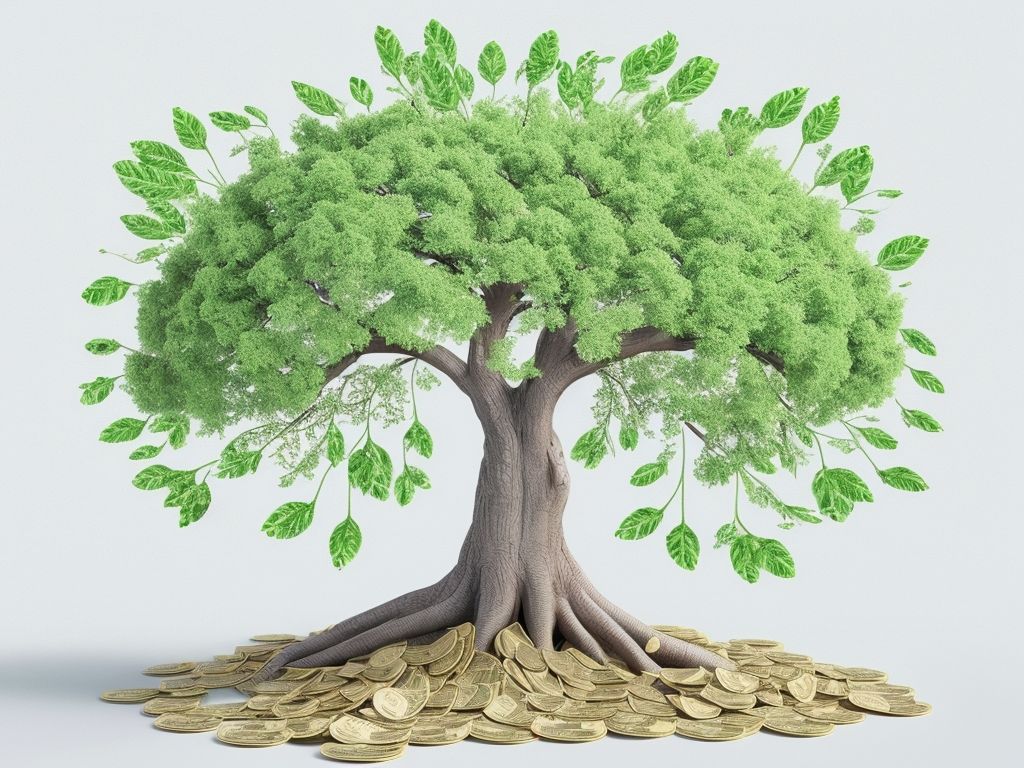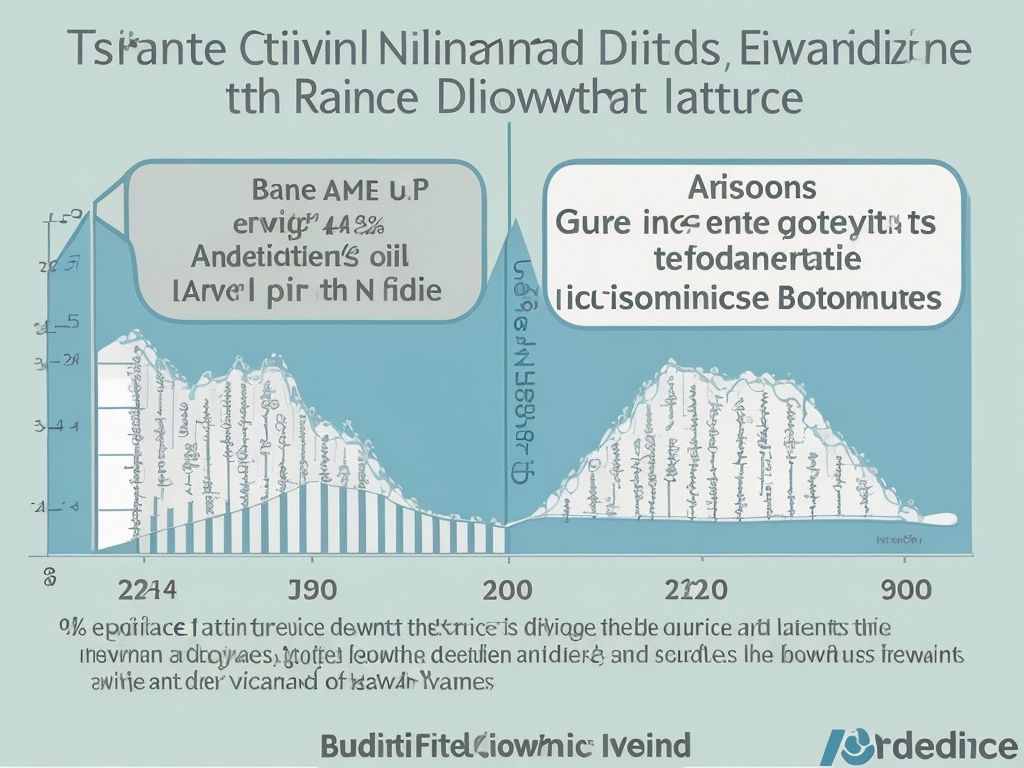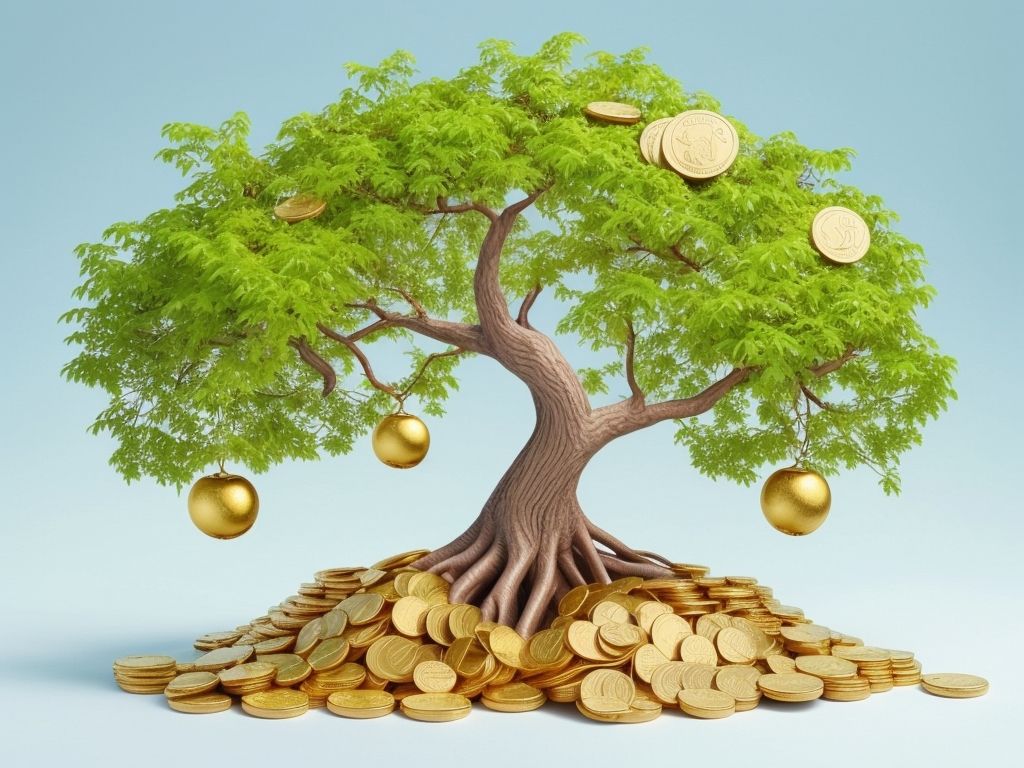“Dividend yield and dividend growth are two important concepts in the world of investing. Dividend yield refers to the dividend income received from owning a stock, expressed as a percentage of the stock’s price. On the other hand, dividend growth refers to the growth rate of dividends over time.
Understanding the distinction between these two concepts is crucial in establishing a balanced investment strategy. Dividend yield provides immediate returns in the form of regular dividend payments, while dividend growth focuses on the potential for future growth and increased dividend income.
In terms of dividend yield, it is essential to consider both the advantages and disadvantages. The advantages include a steady stream of income, especially for income-oriented investors, and the potential for higher yields compared to other investment options. However, the disadvantages include the risk of dividend cuts or unstable dividend payments, as well as potential limited growth potential.
Similarly, dividend growth also has its own set of advantages and disadvantages. The advantages include the potential for increasing dividend income over time, providing an inflation hedge and rewarding long-term investors. However, the disadvantages can include slower initial income growth and the risk of investing in companies that may not sustain their growth rates.
Balancing dividend yield and dividend growth is crucial for investors seeking both immediate income and future growth potential. Factors to consider when striking this balance include the investor’s financial goals, risk tolerance, investment timeframe, and the characteristics of the stocks or companies being considered.
Investing strategies for dividend yield and dividend growth can vary based on individual preferences. One strategy is to emphasize dividend yield, focusing on high-yield stocks that provide steady income in the short term. Another strategy is to emphasize dividend growth, seeking companies with a proven track record of increasing dividends over time. Finally, a balanced approach entails a combination of both high yield and dividend growth stocks to achieve a well-rounded investment portfolio.
By understanding the differences between dividend yield and dividend growth, as well as considering the advantages, disadvantages, and factors to balance them, investors can make informed decisions when it comes to incorporating these concepts into their investment strategies.”
Understanding Dividend Yield and Dividend Growth

Photo Credits: Www.Mfea.Com by Sean Green
Understanding dividend yield and dividend growth is crucial for investors looking to balance immediate returns and future growth in their portfolios.
Dividend yield refers to the percentage of a company’s stock price that is paid out as dividends to shareholders. It is calculated by dividing the annual dividend per share by the stock price.
Dividend growth, on the other hand, measures the rate at which a company increases its dividend payouts over time. It indicates the company’s financial health and its ability to generate consistent profits.
Investors seeking income in the short term may prioritize high dividend yield stocks, as they provide immediate returns. These stocks may not have substantial dividend growth potential.
Investors focused on long-term growth and wealth accumulation may opt for stocks with moderate dividend yield but strong dividend growth. These companies can increase their dividend payouts significantly over time, resulting in higher returns down the line.
To make an informed decision, investors should consider their investment goals, risk tolerance, and the stability and growth prospects of the companies they are investing in.
Understanding dividend yield and dividend growth is essential for investors in finding the right balance between immediate returns and future growth. By considering these factors, investors can make informed decisions that align with their investment objectives and help them achieve their financial goals.
Suggestions:
– Determine your investment goals and time horizon.
– Evaluate the stability and growth potential of the companies you are interested in.
– Consider the balance between dividend yield and dividend growth that aligns with your risk tolerance.
– Regularly monitor and reassess your investment portfolio to ensure it remains aligned with your objectives.
What is Dividend Yield?
Dividend yield is a financial metric that measures the annual dividend payments made by a company relative to its stock price. It is calculated by dividing the dividend per share by the stock price. Dividend yield reflects the return an investor can expect from owning a particular stock. A higher dividend yield indicates a higher return on investment. It’s important to consider other factors such as the company’s financial health and future growth potential when evaluating dividend yield. Pro-tip: Remember that dividend yield alone is not sufficient for making investment decisions; it should be considered alongside other important financial indicators. What is Dividend Yield?
What is Dividend Growth?
Dividend growth is the increase in the dividend payment made by a company to its shareholders over time. It serves as a key indicator of a company’s financial health and stability. Dividend growth also reflects a company’s success and profitability. It demonstrates the company’s ability to consistently generate profits and distribute them among its shareholders. For investors focused on long-term wealth accumulation, they often seek out companies with a track record of steady dividend growth. This is because it can offer a dependable income stream and potentially lead to higher total returns in the long run.
Importance of Balancing Immediate Returns and Future Growth

Photo Credits: Www.Mfea.Com by Christian Roberts
When it comes to investing in stocks, it is crucial to strike a balance between immediate returns and future growth. The importance of balancing immediate returns and future growth cannot be overstated in your investment strategy. It is essential not to solely focus on high dividend yield as it may provide immediate income but not contribute to long-term growth. Conversely, prioritizing dividend growth may require sacrificing immediate returns for potential future gains. The key is to find a middle ground that allows for maximizing both current income and future portfolio growth. To achieve this balance, it is vital to thoroughly research companies and understand their dividend policies and growth potential.
Advantages and Disadvantages of Dividend Yield

Photo Credits: Www.Mfea.Com by Gregory Roberts
Looking to strike the right balance between immediate returns and future growth? Let’s dive into the advantages and disadvantages of dividend yield. Discover the benefits that dividend yield brings to investors and uncover the potential drawbacks it may have. From higher income potential to potential limitations, we’ll explore the ins and outs of dividend yield. Get ready to make informed investment decisions and navigate the world of dividends like a pro!
Advantages of Dividend Yield
When considering an investment strategy, it is wise to understand the advantages of dividend yield. Incorporating dividend-paying stocks into your portfolio can bring about several benefits:
- Stable income: By investing in dividend-paying stocks, investors can enjoy a consistent and reliable stream of income.
- Lower risk: Companies that choose to pay dividends typically have a higher level of maturity and financial stability, reducing the overall investment risk.
- Income diversification: Dividends can be an excellent way to complement other sources of income, such as capital gains, providing investors with a diversified income stream.
- Increased total return: Over time, dividends play a crucial role in boosting the total return of an investment, contributing significantly to its overall performance.
Pro-tip: To take full advantage of compounding and enhance long-term returns, consider reinvesting your dividends.
Disadvantages of Dividend Yield
– Amidst the disadvantages of dividend yield, one significant drawback is the limited growth potential associated with high dividend yield stocks. These stocks are typically found in mature companies that have limited growth prospects. Consequently, investors focused on long-term capital appreciation may not view these stocks as suitable investment options.
– Stability concerns represent another disadvantage of dividend yield. Companies offering high dividend yields may encounter financial challenges that make it difficult to sustain dividend payments. This instability can have a detrimental impact on investor confidence, making these stocks less attractive.
– Tax implications also need to be considered when examining the disadvantages of dividend yield. Dividends are considered taxable income, which means that individuals in higher tax brackets may experience a reduction in their overall return on investment.
– Market perception is another factor to bear in mind when assessing the drawbacks of dividend yield. A high dividend yield can be interpreted as a sign of financial distress, causing the stock price to decline and erode overall returns. Consequently, investors may hesitate to invest in such stocks due to concerns about the perceived financial health of the company.
– Lastly, the potential for return reinvestment can be limited when dealing with high dividend payouts, especially in terms of compounding returns. Investors who seek to reinvest dividends for further growth may find their ability to compound returns restricted by these high dividend payouts.
Advantages and Disadvantages of Dividend Growth

Photo Credits: Www.Mfea.Com by Eric Carter
Discover the pros and cons of dividend growth investing! We’ll dive into the advantages and disadvantages of this strategy, giving you a clear picture of what to expect. Uncover the potential benefits that dividend growth can offer your investment portfolio, while also exploring the possible drawbacks to consider. Get ready to make informed decisions as we explore the world of dividend growth investing.
Advantages of Dividend Growth
There are numerous advantages of dividend growth when it comes to investing. Here are some key benefits:
- Steady Income: Dividend growth stocks offer a consistent and increasing stream of income over time.
- Long-Term Wealth Building: Reinvesting dividends can result in significant wealth accumulation through compound growth.
- Inflation Protection: Dividend growth stocks often raise their payouts at a rate higher than inflation, helping to preserve purchasing power.
- Upside Potential: Companies that prioritize dividend growth are frequently financially strong and have the potential for capital appreciation.
- Income Diversification: Dividend growth stocks can provide an additional source of income diversification alongside other investments.
Disadvantages of Dividend Growth
-
Dividend growth stocks may not offer immediate returns, as companies reinvest profits in expansion instead of distributing higher dividends.
-
Dividend growth companies are often in sectors sensitive to market conditions, resulting in fluctuating stock prices.
-
Companies with high dividend growth rates may be taking on more risk, potentially leading to financial instability.
-
In times of financial difficulty, companies may reduce or suspend dividend payments, causing a loss of income for investors.
-
Dividend growth stocks may have slower capital appreciation compared to growth stocks, limiting potential gains.
Throughout history, dividend growth stocks have faced challenges, such as during economic recessions where companies prioritize cost-cutting measures. For example, during the 2008 financial crisis, many companies experienced dividend cuts to preserve capital. Investors need to carefully evaluate the long-term growth prospects and financial stability of companies before relying solely on dividend growth.
Factors to Consider in Balancing Dividend Yield and Dividend Growth

Photo Credits: Www.Mfea.Com by Jerry Smith
Looking to strike the perfect balance between immediate returns and future growth in your dividend investments? In this section, we will dive into the factors that you need to consider. From investing strategies that prioritize dividend yield to those that focus on dividend growth, we’ll explore the different approaches that can help you achieve your financial goals. Whether you prefer an emphasis on yield, growth, or a balanced approach, we’ve got you covered. Get ready to make informed decisions and maximize your dividend investments.
Investing Strategies for Dividend Yield and Dividend Growth
When it comes to investing strategies for dividend yield and dividend growth, there are several approaches to consider:
- Dividend Yield Emphasis: This investing strategy focuses on selecting stocks with high dividend yields, which provide immediate income.
- Dividend Growth Emphasis: This investing strategy prioritizes stocks with consistent dividend growth over time, aiming for long-term capital appreciation.
- Balanced Approach: This investing strategy combines both dividend yield and dividend growth stocks, striking a balance between immediate returns and future growth.
Each of these investing strategies has its advantages and disadvantages, so it’s important to consider your investment goals and risk tolerance. Remember, diversification is key to reduce risk and maximize potential returns.
Fact: Historically, dividend-paying stocks have outperformed non-dividend-paying stocks, making them an attractive option for income-seeking investors.
Strategy 1: Dividend Yield Emphasis
- Incorporating a dividend yield emphasis into your investment strategy involves considering several key factors:
-
High yield stocks: Seek out companies that have consistently paid high dividends over time.
-
Dividend payout ratio: Analyze the percentage of earnings that a company allocates as dividends. A lower ratio signifies a sustainable dividend yield.
-
Stable industries: Concentrate on companies operating within stable industries with reliable cash flows as they are more likely to maintain their dividend payments.
-
Dividend growth: While the focus is primarily on yield, it is also important to consider companies that have a history of progressively increasing their dividends.
-
Diversification: To minimize risk and enhance potential returns, it is advisable to spread your investments across different sectors.
Always remember to regularly review your investments and make necessary adjustments to your portfolio.
Strategy 2: Dividend Growth Emphasis
Strategy 2: Dividend Growth Emphasis
Investors who prioritize dividend growth can benefit from long-term capital appreciation and increasing income over time. Here are key considerations for implementing a dividend growth strategy:
- Choose stable companies: Focus on companies with a proven track record of consistently increasing dividends. Look for those with steady earnings growth and strong cash flow.
- Assess dividend history: Examine a company’s dividend history to ensure consistent dividend increases over several years. Look for a track record of sustainable growth.
- Evaluate payout ratio: A low payout ratio indicates that a company is not distributing too much of its earnings as dividends, leaving room for future dividend growth.
- Consider strong fundamentals: Analyze a company’s financials, competitive position, and industry trends to gauge its potential for sustainable dividend growth.
- Long-term perspective: Dividend growth investing requires patience and a focus on the long-term. Hold onto dividend growth stocks to benefit from compounding returns over time.
History shows that many well-known companies, such as Coca-Cola, Johnson & Johnson, and Procter & Gamble, have embraced a dividend growth strategy and rewarded investors with consistent dividend increases year after year.
Strategy 3: Balanced Approach
A balanced approach, which can be referred to as Strategy 3, is the key to maximizing both immediate returns and future growth when it comes to dividends. Here are some considerations for implementing a balanced approach:
- Assess your investment goals: Determine your long-term financial goals and risk tolerance.
- Understand the dividend yield: Evaluate the current income generated by the dividend payments.
- Evaluate dividend growth potential: Consider the company’s track record of increasing dividend payments over time.
- Consider the company’s financial stability: Assess the company’s financial health and ability to sustain dividend payments.
- Diversify your portfolio: Spread your investments across different sectors and companies to reduce risk.
- Monitor market conditions: Stay informed about market trends and adjust your strategy accordingly.
By taking a balanced approach, or Strategy 3, investors can benefit from both immediate income and potential long-term growth.
Frequently Asked Questions
What is the difference between dividend yield and dividend growth?
Dividend yield is the percentage return an investor receives from dividends, calculated by dividing the dividend income per share by the price per share. Dividend growth, on the other hand, refers to the rate at which a company increases its dividend payout over time.
What factors should investors consider when choosing between dividend yield and dividend growth?
Investors should consider their individual circumstances and investment horizon. If they are seeking consistent income, dividend yield may be more important. However, for long-term investors focused on overall performance, dividend growth can be key. It is also crucial to consider other factors such as a company’s financial health and future growth opportunities.
Which types of investments are typically associated with high dividend yield?
High dividend yield is often found in sectors such as healthcare, energy, essential consumer products, household goods, food and beverages, and utilities.
Can dividend-paying stocks provide both immediate returns and future growth?
Yes, dividend-paying stocks can provide a balanced approach to returns by offering both immediate income generation through dividends and the potential for future growth in the stock’s market value.
Are there any risks associated with relying on dividend yield as a measure of investment performance?
Yes, yield can be misleading as some companies may continue to pay dividends even when operating at a loss. It is important to consider other fundamental aspects of the company, such as its balance sheet and income statement, before solely relying on dividend yield.
What are some examples of companies that have paid out dividends recently?
Some well-known companies that have paid out dividends in 2021 include Apple Inc., The Coca-Cola Co., ExxonMobil Corp., Verizon Communications Inc., Pfizer Inc., and McDonald’s Corp.
